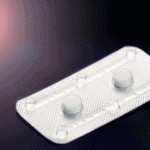
When it comes to men’s health and particularly male fertility, the prostate is an essential gland. This explains why the awareness for prostate enlargement and health is not only necessary but timely.
Even with how vital the prostate is, many people, including men, do not have a good knowledge and fair understanding of what the prostate is, the functions it plays in the male reproductive system and why it deserves great attention and routine checks. Therefore, in this article, we outline in very simple terms;
• an overview of the prostate as an organ
• the major prostatic problems that exist
• the risk factors of prostate diseases and cancer.
• prostate screening and clinical manifestations of prostatic cancer.
The prostate is a walnut-shaped gland that is sited at the base of the penis, and ordinarily weighs approximately 26 grams at the end of puberty in males. The Androgens are the major hormones responsible for the growth and development of the prostate gland.

Since it sits at the base of the penis, the prostate wraps itself around the duct through which urine leaves the body, called the urethra. Prostatic fluid accounts for up to 30% of the volume of semen, and its production is the primary role of the prostate. Prostatic fluid constituents ensure the nourishment and proper motility of sperm.
As with other crucial glands of the body, the prostate is sensitive which is why it is medically advisable that every adult male takes his prostate health seriously. This is because, as men grow older, they begin to experience prostate enlargement as this gland begins to increase in size rather than shrink.
This is to say that the prostate gland of a 60-year-old is bigger than that of a 40-year-old whose prostate gland is also bigger than that of a 20-year-old. Most of the time, this enlargement, if care is not taken, spells doom. Naturally, the prostate grows bigger as one age, so it is safe to say that the increase is inevitable and unpreventable.
Consequently, prostate problems usually begin to affect men from age 50 and above; although, there are a few exceptions where some men below 50 experience symptoms.
When prostate enlargement becomes unhealthy, the common issue it results in is difficulty in urinating because it causes a blockage to the free flow of urine (remember it surrounds some part of the urethra). This is the most common prostate issue in older men, and it is medically known as Benign prostatic hyperplasia (BPH). When one develops BPH, it does not automatically translate to prostate cancer but may lead to other conditions such as kidney, bladder, or urinary tract problems.
A recent study has shown that many developing countries that have long battled with largely communicable diseases are now also facing higher occurrences of non-communicable diseases. In Nigeria, for instance, the prevalence of prostate cancer, Benign prostatic hyperplasia (BPH,) and prostatitis (inflammation of the prostates) are as high as figures reported in some advanced nations. Hence, Prostate diseases are becoming a worldwide issue.
As a matter of fact, about 11% of all cancers affecting men in Nigeria are reported to be of the prostate, whereas as many as 25% and 12% of adult male Nigerians were reported to have BPH and prostatitis, respectively. If these figures make you uncomfortable, you’d understand why it is crucial at this point to spread prostate health awareness as much as possible.

Although the prevalence of prostatic diseases has generated little or no attention among policymakers, the threat they pose to our healthcare system is quite enormous.
• Age
From the foregoing, Age is a major risk factor for having prostatic issues, since the gland gets enlarged as one ages. Hence, any man above 40 is at risk. It is rare to find prostate-related conditions affecting younger men.
• Heredity
A family history of Benign Prostatic Hyperplasia (BPH) can make one most likely to have it too. Risk is doubled when the person who had it is a first-degree relative and more likely if they are more than two in number.
• Race
Prostate cancer affects more African men than their Western counterparts. In fact, there’s a lower incidence of clinically evident prostatic disease in Japanese and Chinese men.
• Diet
Men who consume foods that are high in saturated fat have an increased tendency to have prostate issues in the future.
• Obesity
Among the many downsides to obesity is the risk of having prostatic problems because obesity increases calcium absorption which leads to the likelihood of developing prostate cancer. Obese men also have larger prostates, increasing the surface area that prostate cancer.
Studies have also shown that prostatic diseases may be associated with conditions such as diabetes, insulin resistance, hypercholesterolemia, and hypertension, the prevalence of which is reportedly high in Nigeria. Notably, these diseases are amenable to lifestyle modifications in both prevention and treatment strategies.

• Having sufficiently highlighted on prostate challenges, men at higher risk for prostate cancer, especially older blacks, should limit their calcium intake. High calcium consumption has been linked to a higher chance of having prostate cancer. Taking calcium can lower vitamin-D levels in the body which will enhance increased differentiation of the cancer cells, and is therefore unsafe for the prostate.
• Increased exercise helps protect against aggressive forms of prostate cancer, which are more prevalent in blacks. So, regular exercise (at least 3 times weekly) improves your general health and helps to keep your prostate healthy.
• For obese men, devoting a few months to weight loss can decrease the chances of having prostatic diseases.
• Routine visits to your doctor for prostate screening can help one know the state of the prostate gland and have proven to be more beneficial for the early detection of prostate issues. Speak to a Doctor Now if you are already experiencing symptoms associated with passing out urine effectively.
• At the heart of prostate health is a lifestyle change. Always endeavor to drink enough water to stay hydrated and eat right to maintain a healthy weight.

Even though three major disorders afflict the prostate gland – prostate cancer, benign prostatic hyperplasia (BPH), and prostatitis, most men worry about prostate cancer for very valid reasons.
Prostate cancer is a common and frequent cause of cancer death in men.
Worldwide, in 2008 there were estimated to be 903,000 new cases of prostate cancer and 258,000 prostate cancer deaths making it the 2nd most commonly diagnosed cancer in men and the 6th leading cause of male cancer death.
• 1 in every 6 men get Prostate Cancer
• 1 in every 4 Black men get Prostate Cancer
• Blacks and Latinos are diagnosed at advanced disease stages at a 144% greater rate than whites
• The 5-year survival rate for Blacks and Latinos is worse than for whites and getting worse
• Black men die at a rate 240% higher than whites
READ OUR FULL ARTICLE ON Prostate Cancer: Need for Testing and Early Detection
Investigations:
• Full Blood Count (FBC), Urea and electrolytes
• Liver function tests
• Prostate Specific Antigen (PSA)
• Alkaline phosphatase
• Transrectal Ultrasound (TRUS) and Biopsy
• Computed Tomography (CT)
• Bone Scan
• Important health problem? YES
• Natural history understood? YES and NO
• Detectable latent or pre-clinical phase? YES
• Diagnostic test of suitable sensitivity and specificity? NO
• Adequate facilities to both diagnose and treat? YES
• Tests must be acceptable to the general population? YES
• Benefits should outweigh the adverse effects of screening? NOT IN ALL CASES
• Overall cost acceptable about overall expenditure? YES
• On-going process? YES
• Produced by the glandular epithelium of the prostate
• Trace amounts in salivary, pancreatic and breast tissue
• Found in semen, urine and blood
• Serine protease that liquefies semen to improve sperm mobility
• Found in 3 forms in serum:
• Bound to α-1-Antichymotrypsin
• Bound to α-2-Macroglobulin
• Free PSA
• Lacks sensitivity and specificity
• False Negatives: BPH, Prostatitis, Post-Ejaculation, Urinary Retention.
• 4ng/ml – 22% Probability of Cancer.
• >10ng/ml – 63% Probability of Cancer.
• Prostate Specific Antigen is useful in the detection, staging, and monitoring of prostate cancer. PSA is prostate-related but not cancer-specific.
• An ultrasound probe with an automated biopsy gun is used to take up to 3 cores of prostate tissue
• Antibiotic coverage is required due to the risk of infection
• Shortcomings of Standard Systematic Prostate Biopsy
• False-negative rate
• Incorrect risk stratification (up to 45%)
• Detection of clinically insignificant disease
• Need for repeat biopsy
• Disease overtreatment
Increasing the core number (saturation or repeat biopsy) does not significantly reduce the risk of under-sampling and incorrect risk stratification. It is also important to note that more biopsy episodes increase the risk of detecting indolent cancers. So, the goal is to detect high-grade diseases while avoiding low-risk diseases.
The test can be concluded as prostate cancer and best diagnosed when the Prostate prostate-specific antigen is greater than 20, sufficient clinical suspicion, metastases are sensitive and there are false positives with arthritis, osteomyelitis, and healing fracture.
Medically reviewed by Dr. Ngong Cyprian
References
Cushieri, A. et al. (1996) Clinical Surgery 2nd Ed. ,Blackwell Science Ltd.
George, H. Burkitt , Clive, R.G.Quick and Joanna, B. Reed (1990) Essential surgery 4th. Ed. Churchill Livingstone/Elsevier.
Chukwunonso Ejike. Towards the Prevention and Management of Prostatic Diseases in Nigeria: A Framework, Malaysian J Med Sci. Jul-Sep 2011; 18(3): 65-70
NutritionFebruary 5, 2025
MedicationFebruary 5, 2025








